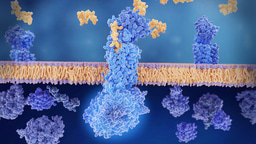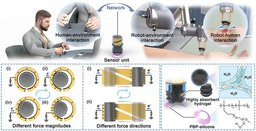Reticular Engineering of Quasiperiodic Moiré Patterns in Metal-Organic Frameworks

Moiré by Design: A Molecular Approach to Twisted Lattices
Moiré patterns emerge when two periodic lattices are overlaid with a slight twist or mismatch, producing large-scale interference effects. In conventional materials such as twisted bilayer graphene and transition metal dichalcogenides, these patterns have been linked to remarkable phenomena, including superconductivity and correlated insulating states. Yet despite their potential, moiré patterns in these systems remain constrained by fixed atomic lattice constants, offering little flexibility to systematically vary their periodicity.
The spark of the idea:
What if the lattice itself could be designed at the molecular level?
Metal-organic frameworks (MOFs), with their modular architectures composed of metal nodes and organic ligands, offer a unique opportunity for precise control over lattice constants through systematic modification of ligand length. By constructing a family of isoreticular 2D MOFs and assembling them into twisted structures, the size of moiré patterns could be tuned, thereby realizing a platform for programmable moiré systems.
Molecular dynamics simulations confirmed the energetic stability of the bilayer structures and predicted favorable stacking configurations. Experimental observations, supported by statistical analysis of high-resolution TEM images, showed that the observed moiré patterns were consistent with the simulated stacking preferences.
The Quasiperiodic Surprise at 30°
When examining the moiré MOFs with a twist angle of 30 degrees using high-resolution TEM, we were overwhelmed by their extraordinary twelve-fold symmetry, which prompted a closer investigation into their underlying structure. Surprisingly, no repeating units were found within the moiré patterns. The presence of forbidden rotational symmetry and non-repeating motifs closely resembled features of quasicrystals, while originating from interference between stacked periodic lattices rather than from an intrinsic aperiodic atomic arrangement.
These observations motivated a mathematical investigation into how the twist angle governs the emergence of periodic versus aperiodic moiré patterns. In particular, the dodecagonal quasiperiodic patterns observed in the TEM images were further corroborated by geometric modeling based on Stampfli tiling, as previously applied in studies of twisted bilayer graphene. The analysis also revealed that the ligand length systematically determines the tile size within the quasiperiodic patterns.

Figure 1. Isoreticular Zr-MOFs and their quasiperiodic moiré patterns.
Opportunities for Programmable Moiré Materials through Reticular Chemistry
Quasicrystals and MOFs have traditionally been regarded as distinct classes of materials, one rooted in aperiodic atomic arrangements, and the other in periodic, reticulated architectures. This study establishes a conceptual and structural connection between these two realms by demonstrating quasiperiodic moiré patterns emerging from twisted MOF layers.
Paradoxically, the reticular chemistry underlying MOFs opens new possibilities for designing moiré materials with tunable symmetry and composition. Topological design of MOFs allows for the realization of diverse quasiperiodic patterns beyond dodecagonal symmetry, while chemical functionalization offers control over interlayer interactions and distances, providing a chemically tunable platform for moiré engineering. By bridging two previously separate domains, this approach not only expands the design space for moiré materials, but also illustrates the potential of reticular chemistry to unlock emergent structural complexity through molecular-level control.
For more details on the experiments and results, please refer to our paper published in Nature Communications: https://www.nature.com/articles/s41467-025-62247-2
Follow the Topic
-
Nature Communications

An open access, multidisciplinary journal dedicated to publishing high-quality research in all areas of the biological, health, physical, chemical and Earth sciences.
Related Collections
With Collections, you can get published faster and increase your visibility.
Clinical trials 2025
Publishing Model: Open Access
Deadline: Dec 31, 2025
Women's Health
Publishing Model: Hybrid
Deadline: Ongoing





Please sign in or register for FREE
If you are a registered user on Research Communities by Springer Nature, please sign in
https://www.academia.edu/143438760/FROM_PHI_TO_ALFA_ANGULAR_QUANTISATION_AND_MUSICAL_STRUCTURE_OF_THE_UNIVERSE anhoter visión about muares